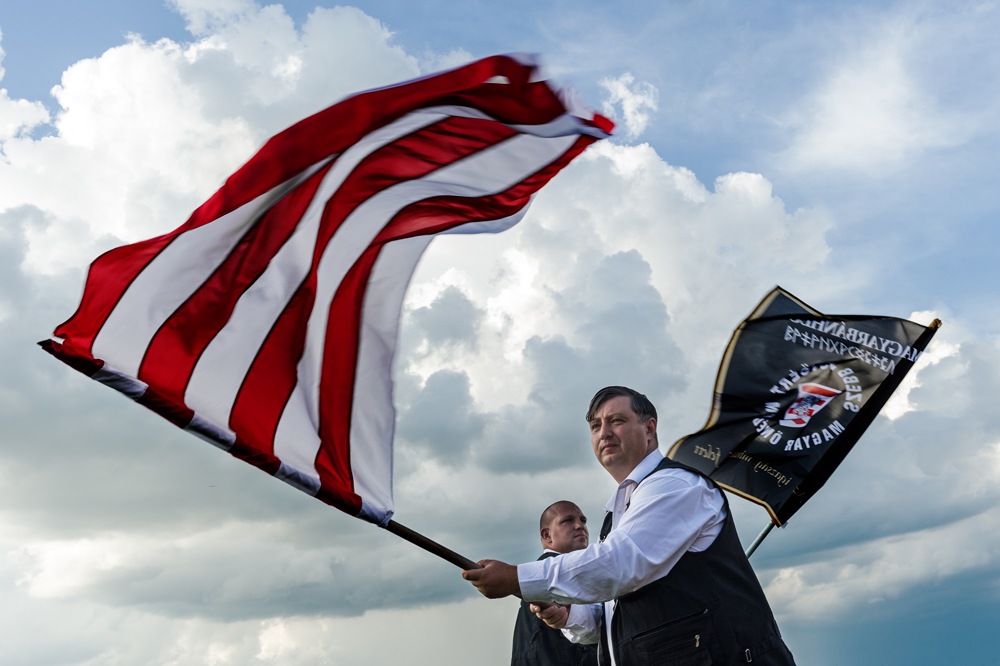This website uses cookies so that we can provide you with the best user experience possible. Cookie information is stored in your browser and performs functions such as recognising you when you return to our website and helping our team to understand which sections of the website you find most interesting and useful.
Nationalism Renaissance
-
PrizeSilver in Press/Feature Story
-
PhotographerPeter Bauza, Brazil
nationalism renaissance | hungary 2014
After several years having been in the spotlight in the international
media for marching in uniforms through Hungarian cities and
villages, the banned Hungarian National Guard has splintered into
several organizations in the country. The latest European
parliament election in May 2014 is showing that radical nationalist
movements are moving into mainstream politics.
With a more radical view of what needs to be done to save the
country than even the Jobbik party (15% oft he Hungarian vote at
the EP elections), the members of organizations like The
Hungarian National Guard (Magyar Nemzeti Garda) or For a Better
Future Hungarian Self-Defense (Szebb Jovoert Magyar Onvedelem)
have shared their vision of problems the country is facing.
Globalization and its effect on local production, the EU’s dictates,
Hungary’s foreign debts, the international financial system, white-
collar criminality, „gypsy criminality“, the protection of minorities
and immigrants by international organizations, lack of
participation of large parts of society in the country’s productivity,
the selling-out of Hungarian land and other property to
foreigners, etc. are just a part of their concerns. This could all
sound pretty mainstream.
Is it the militaristic style, the old Hungarian symbols, uniforms,
slogans and the constant stream of irredentism that make
Hungary’s nationalist groups so radical? The Trianon treaty (1920)
and the injustice done to the Hungarian nation when the victors’
diktat cut off two thirds of Hungarians from the motherland are
the strongest rallying cries, a wrong they are prepared to right.
What this entails exactly means is not clear, but in their own
words, they are even prepared to give their lives for it.
Peter Bauza is a German photographer who works in the documentary and storytelling world. He is very committed to social and geopolitical issues especially in the areas of conservation, global health, diminishing cultures, sustainability and the environment. He has resided in South America and Europe for more than 20 years and also frequently travels to Africa.
Peter’s work has been exhibited in museums, galleries and cultural spaces in Berlin, Lille, Perpignan (Visa pour LImage), Paris, Siena, Daejeon (Korea), Milan, Quito, Moscow, Salta, Rio de Janeiro, Buenos Aires, and at the Museum of Latin American Art (MOLAA) in Long Beach, California.
He has been published in Aftenposten, The Guardian, The Washington Post, New York Magazine, GEO, LA NACION, Leica M Magazine, LFI, Marie Claire, Volkskrant, Stern, NZZ, doc! Magazine, Vrij, Days Japan, NYT Lens, Courrier international, Vanity Fair, VSD, Alma Magazine, Clarin, El Federal, Die Zeit, DOUBLETruck Magazine, DF, among others.
Awards WorldPressPhoto 2017, Visa Pour L'Image 2016 (Visa D'or), American Photography AP31+32, LAF 5, POYLat 2017, Prix De La Photographie Paris, Days Japan Photojournalism Award 2016, Mifa, Hansel-Mieth, among others.

